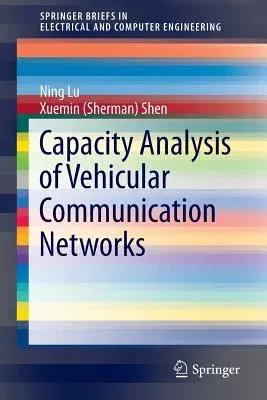Ning Lu
(Author)Capacity Analysis of Vehicular Communication Networks (2014)Paperback - 2014, 22 September 2013

Qty
1
Turbo
Ships in 2 - 3 days
In Stock
Free Delivery
Cash on Delivery
15 Days
Free Returns
Secure Checkout
Part of Series
Springerbriefs in Electrical and Computer Engineering
Print Length
82 pages
Language
English
Publisher
Springer
Date Published
22 Sep 2013
ISBN-10
1461483964
ISBN-13
9781461483960
Description
Product Details
Book Edition:
2014
Book Format:
Paperback
Country of Origin:
NL
Date Published:
22 September 2013
Dimensions:
23.39 x
15.6 x
0.48 cm
ISBN-10:
1461483964
ISBN-13:
9781461483960
Language:
English
Location:
New York, NY
Pages:
82
Publisher:
Weight:
145.15 gm

